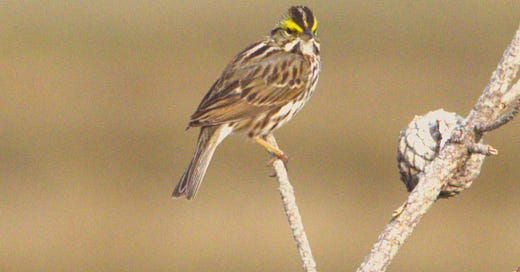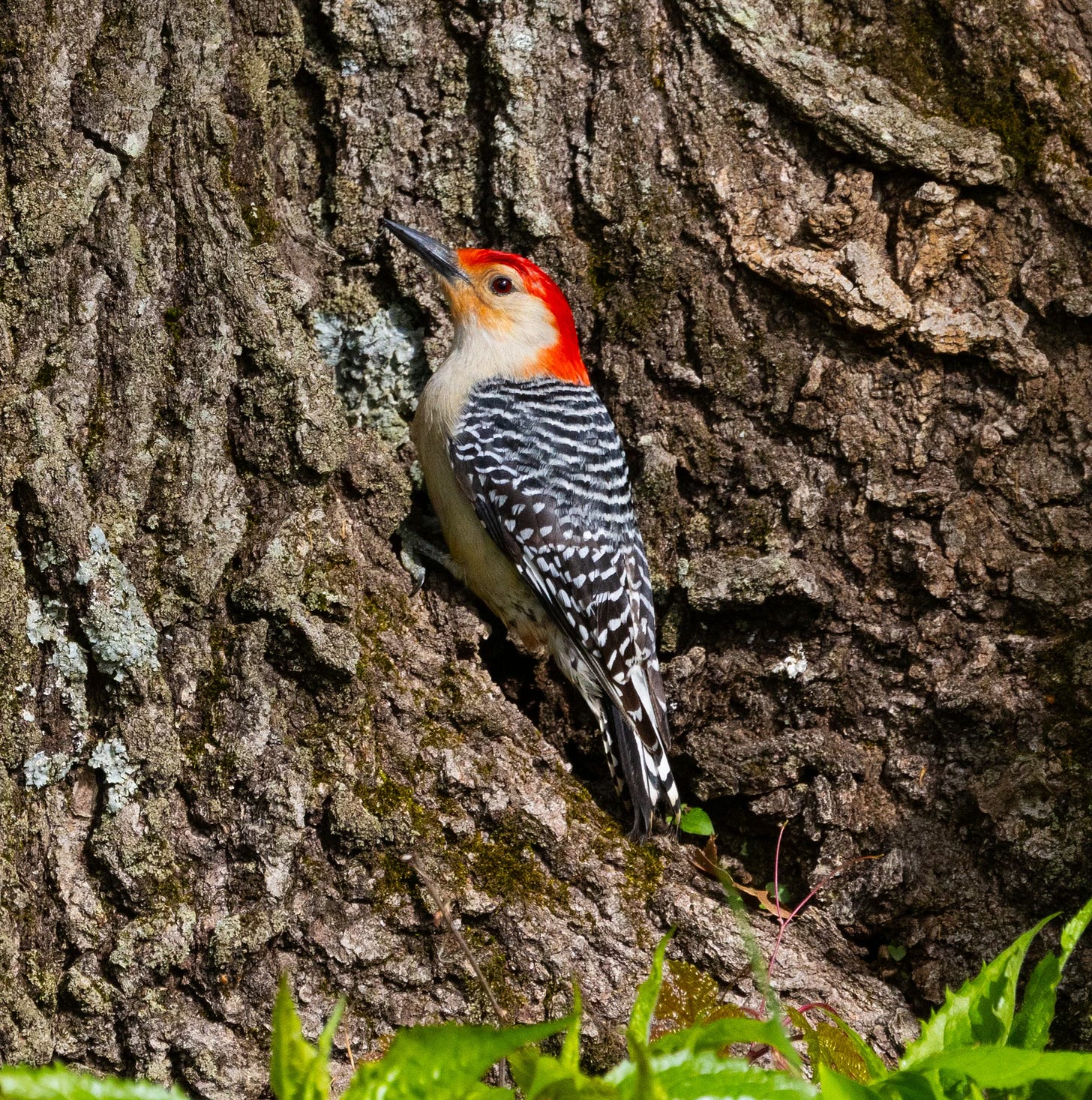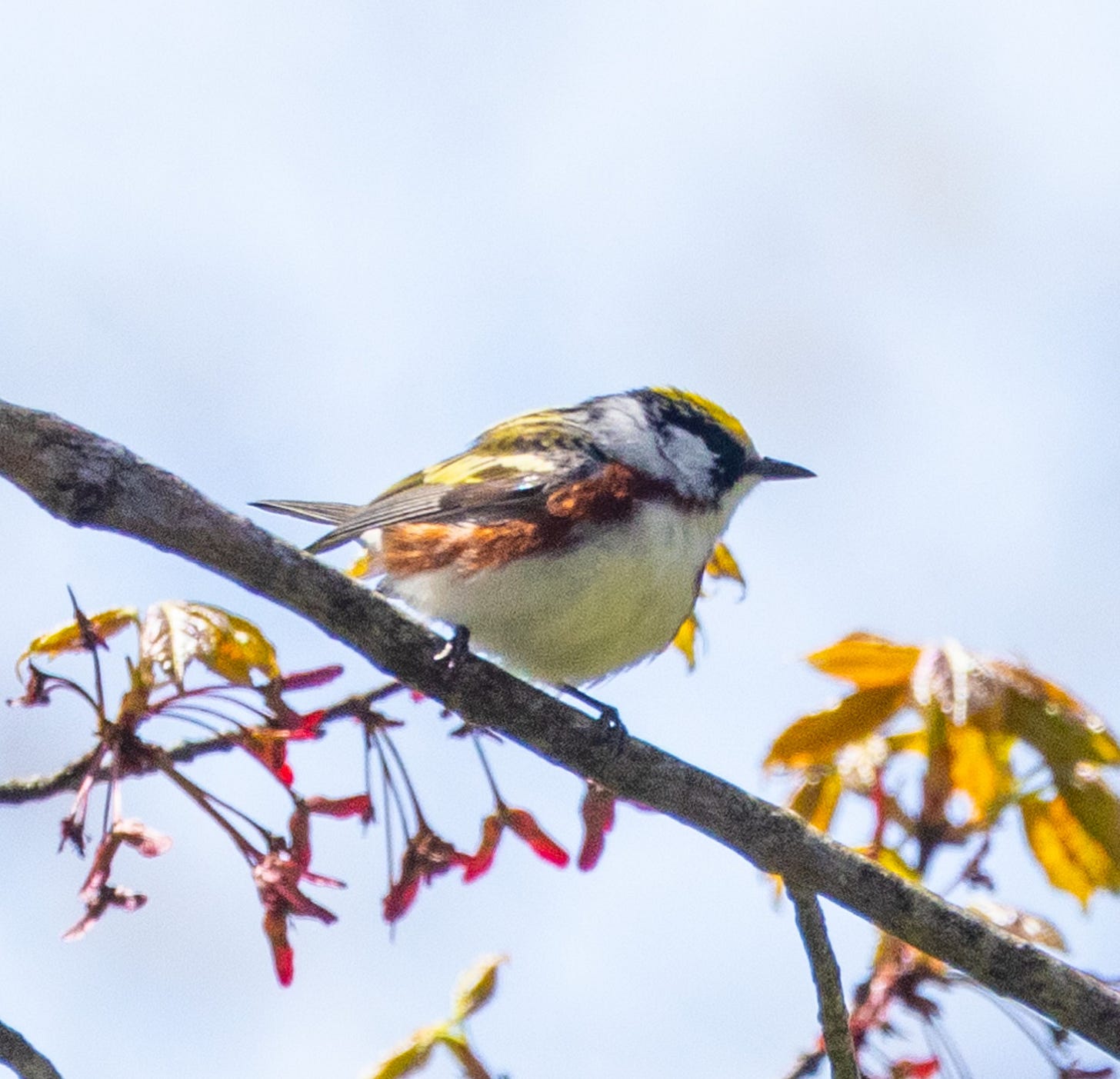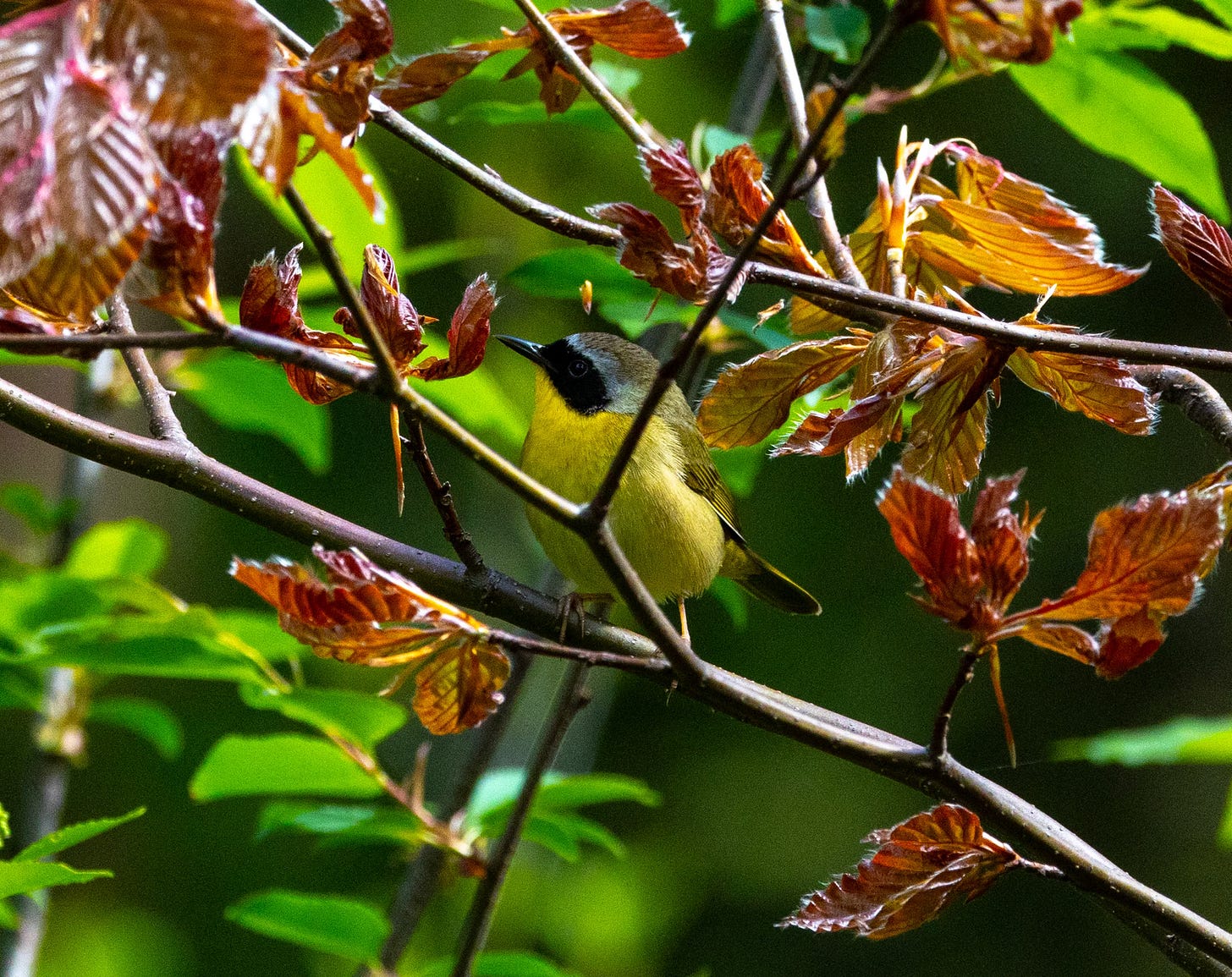1. Let’s begin with another Global Big Day (May 11): Global Big Day 2024 was a remarkable success, showcasing the dedication and enthusiasm of birders worldwide. On May 11, 2024, 1.3 million birders from around the globe participated in this 24-hour celebration of birds organized by the Cornell Lab of Ornithology. This year’s event—the tenth annual Global Big Day to date—saw impressive participation and results, setting new benchmarks for participatory science.
Globally, more than 63,000 birders submitted 156,000 checklists, contributing to the observation of more than 7,725 bird species. Colombia led the species count with an astounding 1,526 species recorded, followed by Peru with 1,428 species, and Brazil with 1,201 species. eBirders participated from 203 countries around the world, more countries birding in a single day than ever before! (via eBird)
2. A celebrity turkey (can this be?): Manhattan has a new unlikely feathered friend, and she’s visiting luxury retailers, dining at high-end restaurants and roosting in Park Avenue’s densest, greenest trees. Known as Astoria, the wild turkey is about as tall as a toddler, with iridescent hues of orange and blue in her brown feathers, an elegant neck, a healthy figure and wings that have helicopter-like strength. Her unusual appearance in Manhattan this week has once again drummed up excitement, bemusement and a growing following of New Yorkers fascinated by the wild fowl’s adventures — and concerned for its safety — in the Big Apple. She has so far eluded capture. (via The New York Times)
Photo by Hap Ellis, Savannah Sparrow - Goose Rocks Beach, Kennebunkport, ME
3. America’s Arctic: In April 2024, the U.S. Department of the Interior under the Biden administration announced rules codifying protections for the existing 13.3 million acres of Special Areas in the National Petroleum Reserve–Alaska, limiting future oil and gas leasing and industrial development. Additionally, the Bureau of Land Management announced a process will soon start to consider expanding or adding additional Special Areas within the NPR–A. The decision did not affect the Willow project, a major new oil development that the Biden administration approved in 2023, which lies just east of the areas protected in the 2024 announcement. (via Living Bird)
4. The importance of insects: On May 16th, World Migratory Bird Day, we celebrated the essential role insects play in fuelling the journeys of migratory birds across vast distances. These tiny creatures are vital for replenishing the energy reserves of traveling birds of all sizes, influencing the timing, duration, and overall success of their migrations. This is particularly evident at crucial stopover points, where peak insect abundance coincides with the arrival of traveling birds. But the outlook for insect populations is bleak. Studies reveal staggering declines of at least 70% in recent decades across Europe. (via BirdLife)
5. Bell’s Vireo - from the “edge of extinction”: As visitors to a bustling park in northeast Los Angeles shot hoops, scrambled up play equipment and lounged in manicured grass, an endangered songbird covertly — but not quietly — did his part to stave off extinction. The least Bell’s vireo, a small, mostly gray songbird, was on the verge of nesting in Rio de Los Angeles State Park, a green respite that supplanted an abandoned railyard along the L.A. River. The bird with a wingspan of just seven inches was singing passionately, an act that marked its territory as breeding season picked up in mid-March. Its song rings out like a clinking question-and-answer: “Cheedle-cheedle-chee? Cheedle-cheedle-chew!” (via Los Angeles Times)
6. We may know less than we thought: Scientists still don’t fully understand the consequences that pollution and climate change can have on the world around us. Now, a new peer-reviewed study published in the Proceedings of the Royal Society examining bird populations living on islands shows we may know even less than previously thought. Along with researchers from East China Normal University in Shanghai, the University of Birmingham in the United Kingdom, and the University of Pittsburgh Medical Center, Frishkoff examined birds living in the Zhoushan Archipelago, the largest chain of islands in China. They chose islands as a place to study birds because while islands make up only 5% of the Earth’s land mass, they support 20% of the world’s species of animals. (via UTA)
Photo by Hap Ellis, Red-bellied Woodpecker - Arnold Arboretum, Boston, MA
7. Episodic memory: Eurasian Jays use something similar to humans’ episodic memory to remember where they stored their food Mentally replaying a memory can be helpful for recalling key details, such as picturing the moment you last arrived home to remember where you put your keys. This ability to relive a past moment (or even imagine a future one) is what psychologists call “mental time travel.” While scientists once thought this ability was unique to humans, evidence of flashback-style memory has now been found in great apes, cuttlefish and rats. And now, in research published on Wednesday in PLOS ONE, researchers have demonstrated that birds called Eurasian Jays can do it, too, expanding our understanding of intelligence and recall in animals. (via Scientific American)
8. Q&A with Chris Cooper: Christian Cooper doesn’t remember how many comics he’s written. It’s a lot, he guesses. Same goes for the birds he’s seen. Both have fueled his life as a storyteller in innumerable ways. And they’ve been constant through lines in his life as an editor and writer, creator of pioneering gay and lesbian characters for Marvel Comics, and memoirist in his 2023 book, Better Living Through Birding: Notes from a Black Man in the Natural World. Most recently, he’s shared his love of ornithology as host of the National Geographic series Extraordinary Birder, which has been nominated for two Emmys. As he prepares for his 40th Reunion, he shares why he always makes time to come back and how the new rendition of "Fair Harvard" changed how he felt about being an alumnus. (via Harvard Alumni Community Board)
9. Thermoregulatory strategies in the Amazon rainforest: A pioneering study published in Oikos has revealed novel insights into how a select group of birds in the Amazon rainforest, known as terrestrial insectivores, is coping with the ever-increasing threats posed by global climate change. Terrestrial insectivores have inexplicably declined in many tropical regions and climate change was long suspected as a contributing factor. Conducted at the Biological Dynamics of Forest Fragments Project near Manaus, Brazil, this study is among the few that explore how the most biodiverse yet understudied regions of our planet are responding to environmental disturbances. (via Phys Org)
10. A helping hand for Black-tailed Godwits: Rare birds have hatched from eggs rescued from fields where severe flooding takes place. The Wildfowl and Wetlands Trust (WWT) said black-tailed godwits have struggled to find suitable nest sites this year, and without human intervention their critically low numbers would fall further. The chicks, which can walk and feed themselves just hours after hatching, will be looked after by WWT staff for up to a month until they are able to fly to boost their chances of survival in the wild. The eggs were collected from the Nene and Ouse Washes in Cambridgeshire and Norfolk, from nearby arable fields and from specially constructed "lifeboat" wetlands near the Ouse Washes. (via BBC)
Photo by Hap Ellis, Chestnut-sided Warbler - Wells Reserve at Laudholm, Wells, ME
11. All about bird banding: It was a slow morning for catching birds at Indiana Dunes State Park on Thursday despite using four nets, but Indiana Dunes Birding Festival participants got to see a variety of birds being studied by researchers. The nets are made with threads so fine that birds have a hard time seeing them, explained Jacob Drucker, a graduate student at the University of Chicago. The nets, 6 to 12 meters long, have small pockets to hold birds that fly into them. Drucker and his partner Iris Fried, a graduate student at Miami University in Ohio, checked the nets every half hour, bringing back captive birds to be examined. Last year, around 26 species and 79 individual birds were caught and studied during the festival, said Stephanie Beilke, with Audubon Great Lakes. (via The Chicago Tribune)
12. A shout-out to the Blue Grosbeak: Today we meet the blue grosbeak. This little songbird is a sometimes resident, sometimes migrant whose coloration has direct effects on its ability to welcome baby blue grosbeaks into the world. The blue grosbeak’s scientific name points out the importance of updating your bird book collection with the newest editions. My go to Costa Rica bird book claims its scientific name is (Guiraca caerulea) and for quite a stretch of time that was true, but after some studying of its mitochondrial DNA in 2001 the people that decide these types of things concluded that (Passerina caerulea) was more accurate. Trust me, you don’t want to publish an article about birds with an inaccurate scientific name, the birders will come for you. The Spanish name, picogrueso azul (translates to blue thick-beak), seems to have remained consistent over time. (via Tico Times)
13. Bird flu item: Given the record-shattering infection rates among poultry and the unprecedented recent spillover to a wide range of other species, some bird flu experts and wildlife researchers are calling for renewed efforts to develop, test, and deploy a vaccine for poultry and potentially other species. Short of triggering a human pandemic, continued spread of bird flu among livestock could further threaten national and global food security. Effective bird flu vaccines for poultry have existed for years and are even used routinely in other countries. But, in stark contrast to the Covid-19 pandemic when new vaccines were rapidly developed and rolled out, the US has yet to adopt vaccination as a disease control strategy for bird flu. The US Department of Agriculture reported promising results from clinical trials of several vaccine candidates, but despite this breakthrough, a slew of logistical, political, and economic challenges might prohibit their use. (via Vox)
Photo by Hap Ellis, Common Yellowthroat - Arnold Arboretum, Boston, MA.
14. Finally, if you have the time, an informative podcast on migration from NPR: Billions of birds are making their way around the world right now as part of their annual spring migration. But climate change, habitat loss, and human infrastructure are making that journey harder for a lot of species. That's why conservation and government groups come together twice a year to celebrate World Migratory Bird Day – but maybe they also just want an excuse to talk about our feathered friends. Either way, we're happy to oblige. Find more of these programs online. Listen to 1A sponsor-free by signing up for 1A+ at plus.npr.org/the1a. (via The National Public Radio)
Bird Videos of the Week
Video by Badgerland Birding, “Birder vs. Bird Watcher: Which Are Your?”
Cornell Live Bird Cam - Mourning Doves.
Cornell Live Bird Cam - Red-eared Parrtfinches.








